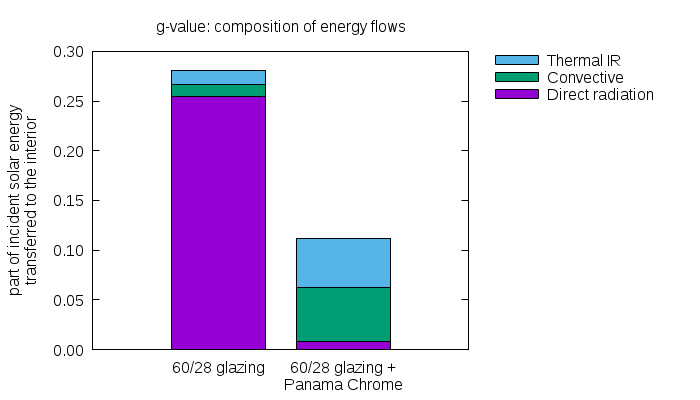ENERGY SAVING FABRICS
Internal screens can bring substantial energy savings. In modern offices cooling is often a bigger problem than heating. This is especially true for today’s highly glazed facades. Keeping the solar heat out is a task that can be handled by selecting the right combination of glazing and shading.
Overview
Shading as a dynamic energy filter
The role of shading
Shading has an influence on the amount of energy flowing through the transparent facade. During the cooling season, reflecting out the solar radiation reduces the load on the cooling system and therefore the energy use for cooling. During the heating season, shading can reduce heat loss through the transparent part of the façade.
Reflectance
When looking for interior shading giving good protection against overheating, high reflectance is one of the key properties to look for. The higher the reflectance, the more solar energy will be reflected back to the exterior and will not impose a load on the cooling system. Shiny metals such as aluminium have the highest possible reflectance. Therefore, metallised fabrics will have a good energy savings potential.
There are also non-metallised fabrics having high reflectance. These can do an equally good job when it comes to heat gain control. Their glare protection performance will generally be less than adequate because light yarns are often also translucent.
The solar factor
The solar factor (solar heat gain coefficient) or g-value gives the percentage of the incident solar power that reaches the interior. The g-value of the combination of glass and shading is an important indicator for the energy savings potential of a shading solution. The lower the g-value, the higher the savings potential.
Best fabrics for energy savings
SNU (all colors)
Panama Chrome (all colors)
XL BO (all colors)
Panama Pro (white)
Star (snow, desert)
Eco chrome (all colors)
SN white
Sea-Tex (white)
Summer & Winter
Summer
The first major step in controlling solar heat gain is filtering the solar spectrum such that predominantly visible light passes and infrared radiation is blocked as much as possible. This task is very well performed by modern solar control glazing. Relative to clear double glazing, such glazing reduces the amount of solar energy entering the building by 50% or more.
Winter
In winter there’s also an opportunity to save energy. Thermally, glazing is the weakest part of the building shell. Lowering the shading during the night can reduce the heat loss through the glazing during that time by over 30%. This reduces the amount of heat that needs to be provided by the heating system early in the morning. The best effects are obtained by honeycomb shades having chambers with stationary air. Metallised fabrics with low-e properties will also do very well on this aspect.
The solar factor
The solar factor or g-value of solar control glazing lies around 30%. This means that about 30% of the incident solar energy will end up in the interior. The g-value sums all different energy flows to the interior:
- direct radiation – by far the largest part in case of unshaded glazing;
- thermal IR radiation – heat radiation due to the elevated temperature of the glass;
- convective heat – heat transferred by warmed air that starts to flow when the glass heats up.
High performance internal shading can reduce the solar factor of the glazing by over 50% to between 10% and 15%.

Cooling load
The total amount of solar energy transferred to the interior can be reduced by over 50%. This means that the amount of energy needed in summer to cool the building and the required cooling capacity also reduce. The amount of cooling energy saved depends on orientation and local climate, as well as on consistency in operating the shades. Consistent operation can only be assured by automated systems.
